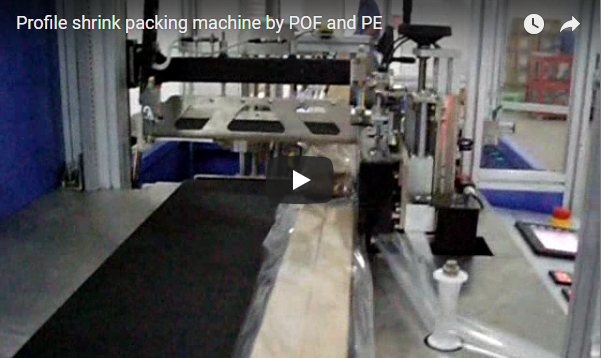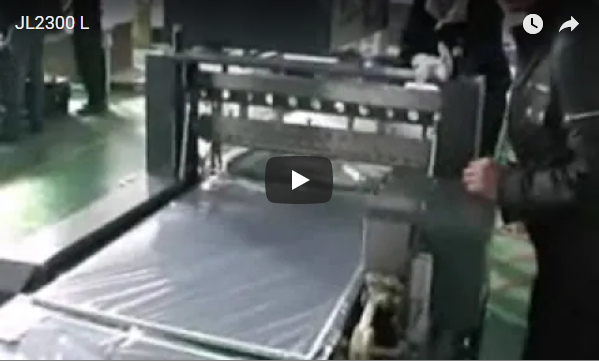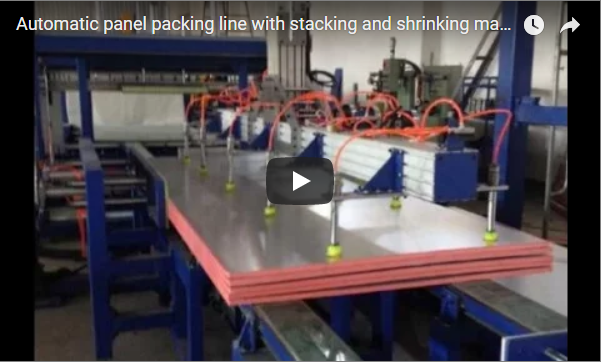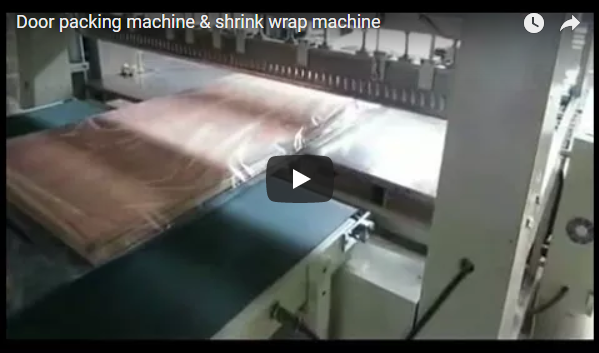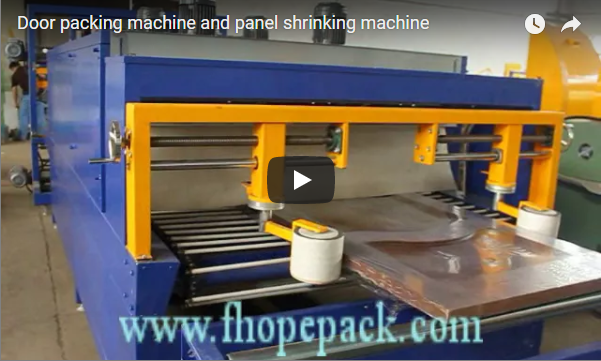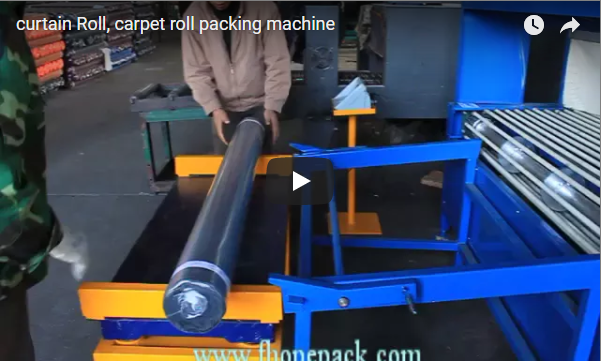Enhancing Protection and Efficiency: A Deep Dive into Automatic Door/Panel Sealing and Shrinking Machines
The journey of a manufactured door or large panel from the production line to its final installation point is fraught with potential hazards. Scratches, moisture damage, and dust accumulation can compromise product quality and lead to costly rework or replacements. Ensuring these large, often unwieldy items arrive in pristine condition is paramount. This is where advanced packaging automation, specifically high-quality automatic door sealing and shrinking machines, plays a crucial role.
This article delves into the technology, design, components, and operational benefits of these essential systems, providing valuable insights for manufacturers seeking to optimize their packaging processes.
1. The Core Function: Sealing and Shrinking Explained
At its heart, an automatic door sealing and shrinking machine performs two primary functions:
- Sealing: It precisely envelops the door or panel within a sleeve or bag of thermoplastic film, typically Polyethylene (PE). This is often achieved using an L-bar sealer or a side-sealing mechanism that creates a secure enclosure around the product.
- Shrinking: The film-wrapped product then passes through an integrated heat shrink tunnel. Controlled hot air circulation causes the film to shrink tightly around the contours of the door or panel, creating a robust, conforming protective layer.

2. Deconstructing the Machine: Key Components and Design Attributes
Understanding the components is key to appreciating the machine's capabilities and selecting the right model:
- Infeed/Outfeed Conveyor System: These automated conveyors manage the flow of products into and out of the machine. Their speed is often synchronized with the sealing and shrinking process for seamless operation. Robust construction is necessary to handle the weight and size of doors and panels.
- Film Delivery System: Holds the film roll(s) and accurately dispenses the required amount of film for each product, often incorporating perforation wheels for controlled air escape during shrinking.
- Sealing Mechanism:
- L-Bar Sealers: Common for creating fully enclosed bags, offering strong seals on multiple sides.
- Side Sealers: Often used for higher speed applications, creating a continuous seal along the side of the product. Precision temperature and pressure control are critical for consistent, strong seals without burning the film.
- Shrink Tunnel: Features heating elements and blower fans to create a consistently heated environment with optimal airflow. Effective insulation minimizes energy loss, and precise temperature control prevents overheating while ensuring adequate shrinkage. Tunnel dimensions must accommodate the largest products being processed.
- Control System (HMI): Modern machines utilize Human-Machine Interfaces (HMIs) – typically touchscreen panels. These allow operators to:
- Set and adjust operating parameters (e.g., conveyor speed, sealing time, tunnel temperature).
- Store product recipes for quick changeovers.
- Monitor machine status and diagnostics.
- Manage safety features.
- Frame and Construction: A robust frame, often treated with durable finishes like varnish by stoving, ensures longevity and stability in demanding industrial environments. This surface treatment provides excellent resistance to scratches, chemicals, and corrosion.
- Dual Press Rollers (Outfeed): As mentioned in the original description, these rollers located at the tunnel exit apply gentle pressure. Their function is crucial for pressing out trapped air and ensuring the cooling film adheres tightly, particularly important for flat panel surfaces, resulting in a neater, more secure package.
3. Technical Specifications: A Comparative Glance
While specifications vary significantly between models and manufacturers, here's a typical range to consider:
| Parameter | Typical Range/Value | Importance |
|---|---|---|
| Max Product Size (L x W x H) | Varies widely (e.g., 2500 x 1200 x 100 mm) | Must accommodate your largest door/panel sizes |
| Sealing Bar Size (L x W) | Matched to product dimensions | Ensures complete sealing around the product |
| Tunnel Aperture (W x H) | Slightly larger than max product W & H | Allows product passage without contact |
| Packing Speed | 5-20+ packs/minute | Dictates throughput capacity |
| Film Type | PE Shrink Film | Common, cost-effective |
| Film Thickness | 40-120 microns (µm) | Thicker film offers more protection |
| Power Requirements | 380V/50Hz/3Ph (Typical) | Ensure compatibility with facility power |
| Heat Tunnel Power | 20-60+ kW | Major factor in energy consumption |
| Control System | PLC + HMI | Standard for automation and ease of use |
| Surface Treatment | Varnish by Stoving / Powder Coat | Durability and corrosion resistance |
Note: These are illustrative ranges. Always consult specific manufacturer datasheets for accurate information.
4. Operational Advantages and User Experience
Investing in an automatic door sealing and shrinking machine yields significant benefits:
- Enhanced Product Protection: Tightly shrunk film shields against dust, dirt, moisture, scuffs, and minor impacts during handling, storage, and transit.
- Improved Presentation: A professionally wrapped product conveys quality and care to the end customer.
- Increased Throughput: Automation dramatically increases packaging speed compared to manual methods.
- Labor Optimization: Reduces the manual labor required for wrapping, freeing up personnel for other tasks.
- Consistency: Ensures every product is wrapped to the same standard, eliminating variability.
- Ease of Use: HMI controls simplify operation, parameter adjustments, and troubleshooting. The integrated conveyor systems streamline product handling.
- Material Efficiency: Automated systems can be optimized for minimal film usage per pack compared to less controlled manual wrapping.
From a user perspective, the HMI is central to the experience, allowing straightforward setup and operation. Routine maintenance typically involves cleaning sealing elements, checking conveyor belts, and ensuring the shrink tunnel's heating elements and blowers are functioning correctly. Access panels are usually designed for ease of maintenance.
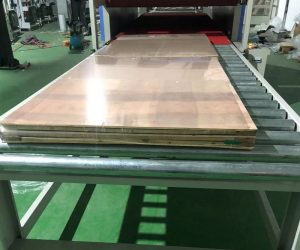
5. Key Considerations for Selection
Choosing the right machine requires careful evaluation:
- Product Dimensions & Weight: Ensure the machine can handle your full range of door/panel sizes and weights.
- Throughput Needs: Match machine speed to your production output requirements.
- Film Compatibility: Confirm the machine works efficiently with your preferred film type and thickness.
- Footprint & Integration: Consider available floor space and how the machine will integrate with existing production lines.
- Budget & ROI: Evaluate the initial investment against projected savings in labor, material, and damage reduction.
- Vendor Support: Assess manufacturer reputation, warranty, service availability, and spare parts access.
Conclusion
High-quality automatic door sealing and shrinking machines are indispensable tools for manufacturers seeking to protect their products, enhance operational efficiency, and deliver a professional final package. By leveraging advanced sealing technology, precisely controlled heat shrinking, intuitive HMI controls, and robust construction featuring treatments like varnish by stoving, these systems provide a reliable and effective solution. The inclusion of features like dual press rollers further refines the packaging quality for flat items. Careful consideration of technical specifications, operational needs, and vendor support will ensure the chosen machine delivers significant value and a strong return on investment.
For more information on shrink wrapping solutions, explore: https://www.fhopepack.com/shrinking-machine/

